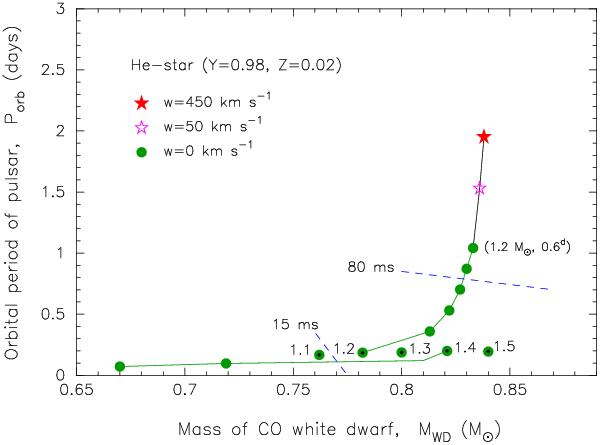Fig. 13

Final orbital periods of recycled radio pulsars as a function of their CO WD companion masses for systems evolving from helium star donors with a metallicity of Z = 0.02. Data points connected with a green line were calculated from the same initial helium star mass (1.2 M⊙ and 1.4 M⊙, respectively). Data points with black dots were all calculated from a binary with an initial orbital period of 0.1 days. The solid red star and the open purple star, connected with a black line to the green data points, indicate similar calculations including an applied hypothetical kick velocity of 50km s-1 and 450km s-1, yielding the widest possible orbit. The less massive the initial helium star donor, and the more narrow the orbit, the more material the NS accretes and the faster spin it obtains. The dashed lines indicate roughly where the pulsar is spun up to 15 ms and 80 ms, respectively. See text for discussions.
Current usage metrics show cumulative count of Article Views (full-text article views including HTML views, PDF and ePub downloads, according to the available data) and Abstracts Views on Vision4Press platform.
Data correspond to usage on the plateform after 2015. The current usage metrics is available 48-96 hours after online publication and is updated daily on week days.
Initial download of the metrics may take a while.


